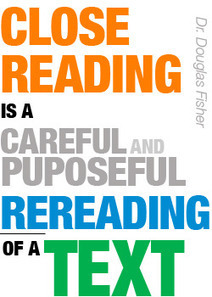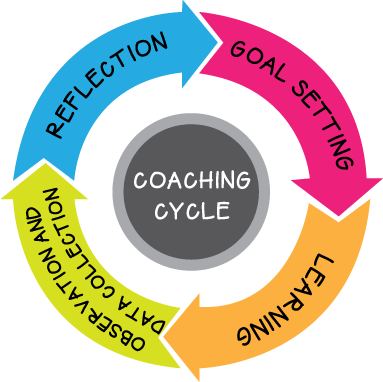1. Number the paragraphs
The Common Core asks students to be able to cite and refer to the text. One simple way to do this is by numbering each paragraph, section or stanza in the left hand margin. When students refer to the text, require them to state which paragraph they are referring to. The rest of the class will be able to quickly find the line being referred to.
2. Chunk the text.
When faced with a full page of text, reading it can quickly become overwhelming for students. Breaking up the text into smaller sections (or chunks) makes the page much more manageable for students. Students do this by drawing a horizontal line between paragraphs to divide the page into smaller sections.
3. Underline and circle… with a purpose.
Telling students to simply underline “the important stuff” is too vague. “Stuff” is not a concrete thing that students can identify. Instead, direct students to underline and circle very specific things. Think about what information you want students to take from the text, and ask them to look for those elements. What you have students circle and underline may change depending on the text type.
For example, when studying an argument, ask students to underline “claims”. We identify claims as belief statements that the author is making. Students will quickly discover that the author makes multiple claims throughout the argument.
When studying poetry, students could underline the imagery they find throughout the poem.
Providing students with a specific thing you want them to underline or circle will focus their attention on that area much better than “underlining important information”.
4. Left margin: What is the author SAYING?
It isn’t enough to ask students to “write in the margins”. We must be very specific and give students a game plan for what they will write. This is where the chunking comes into play.
In the left margin, ask students to summarize each chunk. Demonstrate how to write summaries in 10-words or less. The chunking allows the students to look at the text in smaller segments, and summarize what the author is saying in just that small, specific chunk.
5. Right margin: Dig deeper into the text
In the right-hand margin, again direct students to complete a specific task for each chunk. This may include:
· Use a power verb to describe what the author is DOING. (For example: Describing, illustrating, arguing, etc..) Note: It isn’t enough for students to write “Comparing” and be done. What is the author comparing? A better answer might be: “Comparing the character of Montag to Captain Beatty”.
· Represent the information with a picture. This is a good way for students to be creative to visually represent the chunk with a drawing.
· Ask questions. I have found this to be a struggle for many students, as they often say they don’t have any questions to ask. When modeled, students can begin to learn how to ask questions that dig deeper into the text. I often use these questions as the conversation driver in Socratic Seminar.
There are many other things students can write in the margins. However, we must model and teach these strategies so that students will have an idea of what to write when they are on their own.









